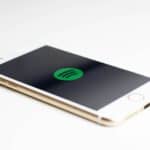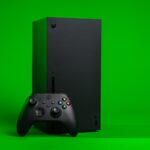Have you ever turned on your computer only to see a strange message saying “Reboot and select proper boot device”? This error can be frustrating when you just want to use your computer. The “Reboot and select proper boot device” error occurs when your computer cannot find a device to boot from, meaning it cannot locate the operating system to start up.
This common error might happen for several reasons. Your computer’s BIOS might not be configured correctly, the hard drive containing your operating system could be damaged, or the cables connecting your boot device might be loose. Sometimes, it’s as simple as having a USB drive plugged in that’s confusing your computer about where to boot from.
Reboot and select proper Boot device
or Insert boot media in selected boot device and press a key
Don’t worry if you’re seeing this error on your screen. While it looks serious, in many cases you can fix it yourself without advanced technical skills. The solution might be as simple as checking connections, adjusting settings in your BIOS, or performing basic troubleshooting steps that we’ll cover in this article.
Here are the steps to fix the “Reboot and Select Proper Boot Device” error on a Windows PC:
Step-by-Step: Fix “Reboot and Select Proper Boot Device” Error
1. Check All Physical Connections
- Turn off your PC.
- Open the case (for desktops) or access the drive bay (for laptops).
- Ensure the SATA/IDE cables and power cables are securely connected to your hard drive.
- Reseat the cables on both the motherboard and the drive ends.
- Close the case and restart the computer.
2. Enter BIOS/UEFI Settings
- Restart your PC and press the BIOS key repeatedly (usually
DEL,F2,F10, orESCdepending on your PC). - In the BIOS, go to Boot Order/Boot Priority.
- Make sure your system hard drive (usually listed by name or model) is set as the first boot device.
- Save changes and exit (
F10to save and exit on most systems).
3. Check for Recognized Drive in BIOS
- Still in BIOS: go to the Storage or Information tab.
- See if your hard drive or SSD is detected.
- If not detected, the drive may be dead or not properly connected.
- Try connecting it to a different SATA port or using a different cable.
4. Use Windows Recovery Environment
If your drive is detected but Windows won’t boot:
- Boot from a Windows installation USB or DVD.
- Select “Repair your computer” > Troubleshoot > Advanced Options.
- Choose Command Prompt and type:
bootrec /fixmbr
bootrec /fixboot
bootrec /scanos
bootrec /rebuildbcd
- Press Enter after each line.
- Close the Command Prompt and restart your PC.
5. Disable Legacy Boot / Enable UEFI (If Needed)
- If you recently upgraded hardware or OS, mismatched BIOS boot mode could cause this error.
- In BIOS, toggle UEFI/Legacy Boot Mode:
- If you’re using Windows 10/11 and GPT partition, use UEFI.
- For older MBR-based installs, use Legacy/CSM.
6. Reset BIOS to Defaults
- If unsure what changed in BIOS, you can reset it:
- Enter BIOS > Find the option “Load Setup Defaults” or “Reset to Default”.
- Save and exit.
7. Test Your Drive
- If none of the above works, boot using a USB or external tool (like Hiren’s BootCD or Linux Live USB).
- If you can’t access files, your hard drive may be failing.
- Consider replacing the drive and reinstalling Windows.
8. Reinstall Windows (if all else fails)
- If your drive is healthy but Windows is corrupted beyond repair:
- Back up any important data (if accessible).
- Perform a clean install using a Windows USB installer.
If you’re still stuck after these steps, the issue is likely hardware-related — either a dead hard drive or motherboard issue. Let me know what part you’re stuck on and I can help further.
Key Takeaways
- The “Reboot and select proper boot device” error means your computer cannot find the operating system to start up.
- Common causes include incorrect BIOS settings, damaged hard drives, loose cables, or the presence of other bootable media.
- Most boot device errors can be resolved by checking physical connections, configuring BIOS settings, or using recovery tools.
Understanding Boot Devices and Their Configuration
When a computer shows the “Reboot and select proper boot device” error, it means the system can’t find a valid device to start up from. Understanding how boot devices work and how to configure them properly is key to solving this issue.
Boot Process Overview
The boot process begins when you press the power button on your computer. The motherboard receives power and activates the BIOS or UEFI (newer systems). This firmware performs a Power-On Self Test (POST) to check that all hardware components work correctly.
After POST, the BIOS/UEFI looks for bootable devices according to the boot priority order. It searches for a boot loader on these devices – a small program that loads the operating system.
If no bootable device is found or the boot sequence is incorrect, the “Reboot and select proper boot device” error appears. This often happens when the hard drive isn’t detected, the boot order is wrong, or the operating system is corrupted.
BIOS/UEFI Settings
The BIOS (Basic Input/Output System) or UEFI (Unified Extensible Firmware Interface) contains settings that control which device your computer tries to boot from first. You can access these settings during startup by pressing a specific key – often F2, F12, Del, or Esc, depending on your motherboard.
In the BIOS/UEFI menu, look for settings called “Boot,” “Boot Options,” or “Boot Priority.” Here you’ll see a list of available devices like:
- Hard Disk Drive (HDD)
- Solid State Drive (SSD)
- USB devices
- CD/DVD drive
- Network boot
You can change the boot order by moving devices up or down in priority. The computer will try to boot from each device in order until it finds one with a valid operating system.
Identifying the Correct Boot Device
To fix boot device errors, you need to identify which device contains your operating system. In most cases, this will be your main storage drive (HDD or SSD).
Check your BIOS/UEFI to see if all storage devices are detected. If your drive isn’t listed, it might be:
- Physically disconnected
- Failed or damaged
- Not receiving power
Sometimes the CMOS battery (a small battery on the motherboard) may be depleted, causing BIOS settings to reset. Replacing this battery can help maintain proper boot settings.
If you’re trying to boot from a USB drive or installation media, make sure it’s properly prepared as a “bootable” device. Not all USB drives with files on them can boot a computer – they need specific boot sectors and files installed.
Troubleshooting Boot Device Errors
When your computer displays the “Reboot and select proper boot device” message, it indicates that your system cannot find the necessary information to start up properly. This common error has several potential causes and solutions.
Analyzing the ‘Reboot and Select Proper Boot Device’ Error
This error message appears when your computer’s BIOS cannot locate a valid boot device containing an operating system. The boot device is typically a hard drive (HDD) or solid-state drive (SSD) that contains your Windows or other operating system.
When the computer starts up, the BIOS checks for bootable devices according to the boot sequence configured in its settings. If it cannot find a bootable device, this error appears on screen.
The error might indicate hardware issues like disconnected or faulty cables, drive failure, or software problems such as corrupted boot sectors or incorrect BIOS settings.
Common Causes and Solutions
Hardware Issues:
- Loose or damaged SATA cables connecting your HDD/SSD
- Faulty hard drive or SSD
- Damaged SATA slot on the motherboard
- CMOS battery failure affecting BIOS settings
Software Issues:
- Corrupted Master Boot Record (MBR)
- Missing active partition
- Incorrect boot sequence in BIOS
- Operating system corruption
Most hardware issues can be resolved by checking connections, replacing faulty cables, or testing the drive in another computer. For software problems, solutions include rebuilding the MBR, setting the correct partition as active, or adjusting BIOS settings.
Severe cases might require reinstalling Windows using a bootable USB drive or Windows repair disc.
Step-by-Step Troubleshooting Guide
Check BIOS Settings
- Restart your computer and press the appropriate key (usually F2, F12, or Del) to enter BIOS
- Verify that your boot drive is properly detected
- Ensure the boot sequence lists your main drive as the first boot device
- Save changes and restart
Inspect Hardware Connections
- Power off the computer completely
- Open the case and check that all SATA cables are firmly connected
- Try a different SATA port on the motherboard
- Replace cables if available
Repair Boot Records
- Boot from a Windows installation media or repair disc
- Access Command Prompt through recovery options
- Use commands like “bootrec /fixmbr” and “bootrec /rebuildbcd”
- Set the correct partition as active using diskpart if needed
If these steps don’t resolve the issue, your drive might be failing and require replacement or data recovery services.
Recovering the System
When facing a “reboot and select proper boot device” error, several recovery methods can restore your system to working order. These solutions range from repairing boot records to completely reinstalling your operating system.
Rebuilding the Master Boot Record (MBR)
The Master Boot Record is crucial for system startup. When it becomes corrupted, Windows cannot boot properly. To rebuild it:
- Boot from Windows installation media (DVD or USB)
- Select “Repair your computer” when the installation screen appears
- Choose “Command Prompt” from the recovery options
- Type the following commands:
bootrec /fixmbr(repairs the master boot record)bootrec /fixboot(writes a new boot sector)bootrec /scanos(scans for Windows installations)bootrec /rebuildbcd(rebuilds the boot configuration data)
These commands repair damaged boot files and restore the active partition information that points to your operating system location.
Using a Windows Repair Disc or Bootable USB
A repair disc or bootable USB can fix boot problems without data loss:
- Create repair media on another working computer using the Windows installation ISO
- Boot from the repair media by setting it as the first boot device in BIOS
- Select language preferences when prompted
- Click “Repair your computer” instead of “Install now”
- Choose “Troubleshoot” > “Advanced options”
- Select “Startup Repair” and let Windows diagnose and fix boot issues
This process helps restore Windows boot files and repair the boot environment for Windows 7, 8, 10, and newer versions.
Reinstalling the Operating System
If other recovery methods fail, reinstalling Windows may be necessary:
- Back up important data if possible (using a bootable Linux USB to access files)
- Boot from Windows installation media
- Follow the installation wizard and select “Custom install”
- Choose the drive where Windows was previously installed
- Complete the installation process by following on-screen instructions
This approach provides a fresh operating system but erases existing programs. Consider this option only after trying less drastic solutions, as it requires reinstalling applications and restoring data from backups.
Frequently Asked Questions
Boot device errors can be frustrating but are often fixable through proper troubleshooting steps. These common questions address the main issues people face when their computer displays the “Reboot and Select Proper Boot Device” message.
What steps are involved in resolving a boot device not recognized error during startup?
When facing a boot device error, the first step is to restart the computer to rule out temporary glitches. If the error persists, enter the BIOS by pressing the designated key during startup (often F2, F12, or Delete).
Once in BIOS, verify that the hard drive containing the operating system appears in the detected devices list. If the drive is detected, check that it’s properly set in the boot priority sequence.
If the drive isn’t detected, check the physical connections. Power down the computer, open the case, and ensure all cables connecting the hard drive are securely attached to both the drive and motherboard.
How can I alter the boot sequence in BIOS to successfully start my computer?
To change the boot sequence, restart the computer and immediately press the BIOS access key (F2, F12, or Delete, depending on the manufacturer). This action opens the BIOS setup utility.
Navigate to the “Boot” tab or section using the arrow keys. Look for an option labeled “Boot Priority,” “Boot Sequence,” or something similar.
Use the provided keys (often shown at the bottom of the screen) to move your primary hard drive to the top of the boot priority list. Press F10 to save changes and exit, allowing the system to restart with the new settings.
What causes a system to fail to detect the boot device and how can I troubleshoot it?
Several issues can prevent boot device detection: loose or damaged cables, corrupted boot sectors, failed hard drives, or incorrect BIOS settings. Power surges and improper shutdowns may also corrupt boot files.
For hardware troubleshooting, check all physical connections and listen for unusual sounds from the drive. If the drive makes clicking noises, it may be failing physically.
For software issues, try using the Windows recovery environment from installation media to run repair tools like Startup Repair or Command Prompt utilities. These can fix master boot record (MBR) or boot configuration data (BCD) problems.
Is there a way to fix a ‘select proper boot device’ error for different versions of Windows?
For Windows 10 and 11, create recovery media using another working computer. Boot from this media and select “Repair your computer” to access troubleshooting tools like Automatic Repair.
For Windows 7 and 8, insert the installation disc and boot from it. Select the repair option and run the Startup Repair tool, which automatically fixes many boot-related problems.
All Windows versions support Command Prompt repairs. Common commands include “bootrec /fixmbr”, “bootrec /fixboot”, and “bootrec /rebuildbcd” to repair various boot components.
How can I resolve a boot device error on an Acer/Dell/Gigabyte computer?
On Acer computers, access the BIOS with F2 and check if the hard drive is detected. If using an SSD, ensure the SATA mode is set correctly (typically AHCI mode).
Dell computers often include hardware diagnostics accessed by pressing F12 during startup. Run these tests to identify hardware failures before attempting software fixes.
Gigabyte motherboards typically use F12 for the boot menu and Delete for BIOS access. Check if the motherboard’s BIOS needs updating, as outdated firmware can cause boot device detection issues.
What solutions are recommended by professionals to prevent a computer from failing to recognize the correct boot device?
IT professionals recommend regular system backups to quickly recover from boot failures. Creating a recovery drive provides a way to boot and repair the system when problems occur.
Keeping the BIOS/UEFI firmware updated helps prevent compatibility issues with storage devices. Most manufacturers provide update utilities through their websites.
Professionals also suggest proper shutdown procedures to prevent file system corruption. Always shut down through the operating system menu rather than holding the power button.







